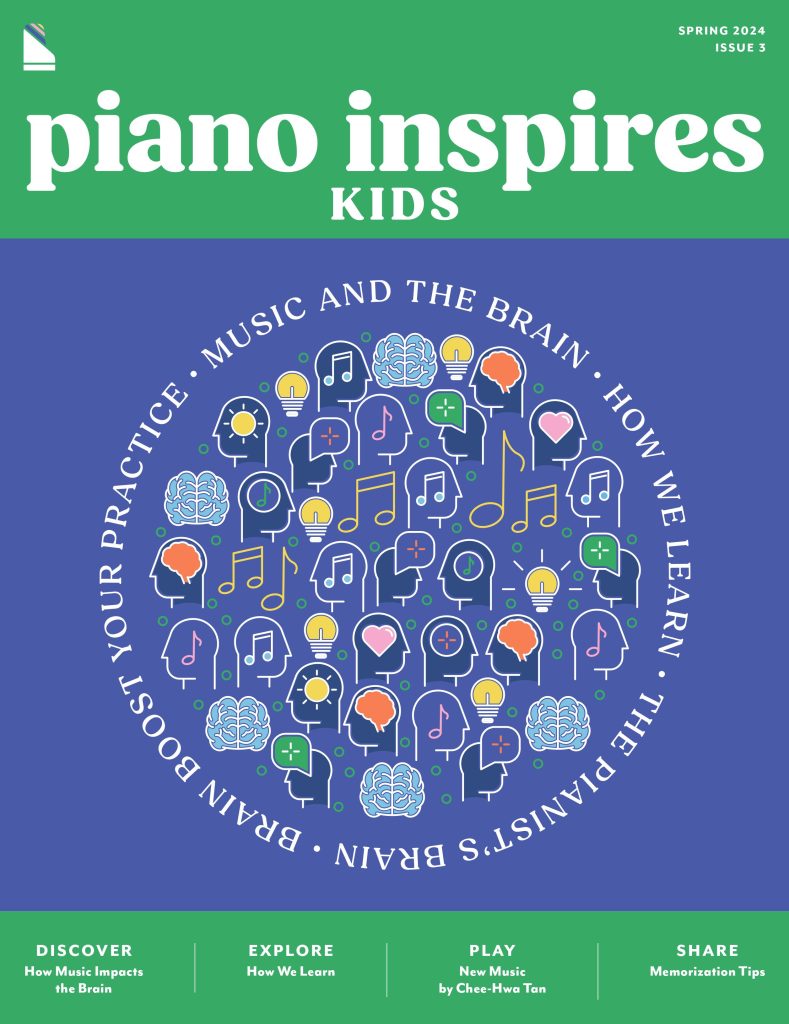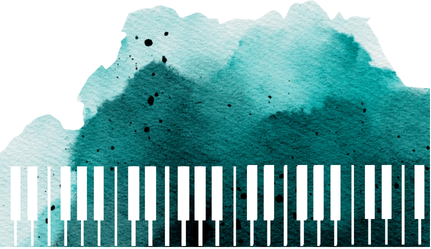

Imagine you are playing the piano for a party, and the people dancing are enjoying the music you’ve picked. They are having so much fun that they don’t want you to stop! Instead of repeating the music again, you improvise and play around with the tune. With each repetition, you get more and more creative and change the dynamics, switch the rhythm, add some flourishes and arpeggios—once you even flip the major chords to minor ones.
This is the idea behind the musical form called “theme and variation.” Composers have actually been writing in variation form for over 500 years.
Let’s explore Beethoven’s Six Variations on a Swiss Song in F major, WoO 64, to help get your creative juices flowing.

Hear Here!
Listen to Six Variations on a Swiss Song, WoO 64, performed by Alfred Brendel.

Variation 1
Look at all those triplets! To find the melody, circle the first note of every right-hand triplet. How has Beethoven changed this from the theme?

Variation 2
Now it’s the left hand’s turn to shine! In the first measure, circle all the dotted eighth notes. Notice how similar this is to the left hand of the theme.
For variations 3-6, view page 13 from the Spring 2024 issue of Piano Inspires Kids!
During the Classical era, composers like Beethoven created variations that were based on a well known tune or the melody of another composer. The piece begins with the theme, or a simple statement of the melody harmonized with notes in the left hand. Then, the composer writes variations, re-imagining elements of the theme for each numbered variation. The variations usually get quite fanciful (and difficult!) by the end.

One of Beethoven’s most famous works actually resulted from a call similar to “Variations on a theme in Dorian” by Chee-Hwa Tan (see page 10 of the Spring 2024 issue of Piano Inspires Kids). In 1819, Anton Diabelli wrote a waltz and invited many different composers to write variations. Beethoven’s Diabelli Variations, Op. 120, was created as a result.
Want More Inspiring Content?
Join our community of inspired music makers. Subscribe to Piano Inspires Kids and explore the world through the music, cultures, and people that connect us to one another.
Follow us on social media!

Like this article?
This content is excerpted from the Autumn 2024 issue of Piano Inspires Kids.
Discovery Blog
Announcing: 2026 Video Game Composition Contest
In video games, the main character often has its own theme song that compliments its personality. Create your dream video game character—someone or something original with its own personality and story—and compose a theme song. Winners will be featured in the Summer 2026 issue of Piano Inspires Kids.
Continue Reading Announcing: 2026 Video Game Composition Contest
Reader Poll: Are Books Better than Digital Scores?
Have your students ever dreamed of composing music for movies? Now’s your chance! With our 2025 Piano Inspires Kids Composition Contest, young pianists can take on the exciting role of a movie soundtrack composer.
Continue Reading Reader Poll: Are Books Better than Digital Scores?
Follow us on Instagram!
See more inspiring content on our Instagram page @pianoinspireskids!Whether you’re a parent, teacher, or music enthusiast, @pianoinspireskids offers a vibrant collection of tips, performances, and educational content that will ignite a love for the piano in kids of all ages. Join the community today and be part of a movement that’s inspiring pianists around the world! Like this…

